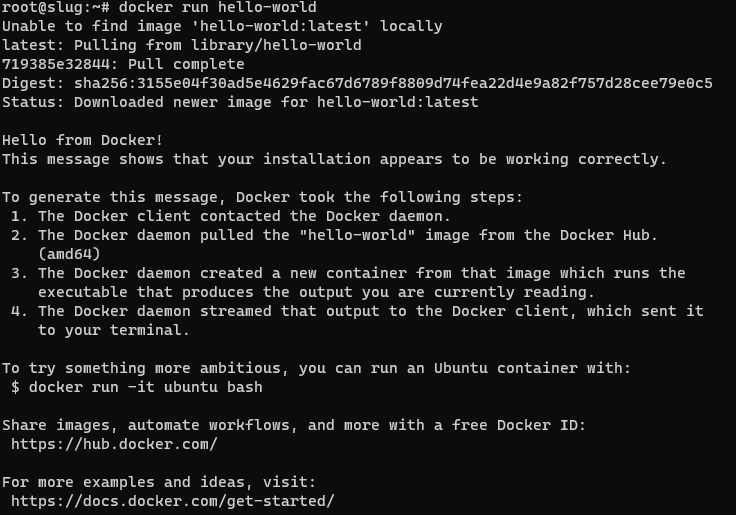Brian Watson
- 2 Posts
- 23 Comments

 1·7 months ago
1·7 months agoI suggest you learn about the difference between line level and speaker level. This article seems to do a decent job:
https://www.electronicshub.org/speaker-level-vs-line-level/
Your boiling water analogy does not fit - water boils at 100°C (depending on air pressure). It’s like the digital signal - boiled/not-boiled, on/off, 1/0, etc.
The output of a DAC (Digital to Analogue Converter) is a line level analogue signal and this signal has an amplitude (voltage) that can be controlled. I’m not a software or audio engineer so I don’t understand how, but my reading and own testing supports this.
My own simple test: I have a Google Pixel 4a and an Apple USB-C DAC (dongle). If I use headphones connected to either the phone audio jack or the DAC and any “normal” music player I can listen at full volume - it’s loud, but far from uncomfortable. If I use USB Audio Player PRO and configure direct hardware access to the DAC I cannot listen at full volume - it’s too loud.
All that makes sense - except that I’m taking about 1or 2 physical servers at home and my only real motivation for looking into containers at all is that some software I’ve wanted to install recently has shipped as docker compose scripts. If I’m going to ignore their packaging anyway, and massage them into some other container management system, I would be happier just running them of bare metal like I’ve done with everything else forever.

 151·7 months ago
151·7 months agoI think Kodi was amazing when it was XBMC and the only real option. It seems to be falling behind now though :-( I moved to Jellyfin a couple of years ago.

 4·7 months ago
4·7 months agoWhat you’re saying makes sense, but I can’t believe nobody has bought up the fact that a lot of our phones are constantly listening for music and displaying the song details on our lock screen. That all happens without the little green microphone active light and minimal battery and bandwidth consumption.
I know next to nothing about the technology involved, but it doesn’t seem like it’s very far from listening for advertising keywords.

 21·7 months ago
21·7 months agoNo - I know the difference between a DAC and an amp. The Android (or, maybe it’s just Google Pixel devices, I can’t recall) audio subsystem limits audio output. My phone max. output is about 800mV. I believe they assume all output is going to earphones and they’re trying to protect your hearing. This happens even if you’re using a USB DAC. But, there is an app called USB Audio Player PRO (the may be others) that can bypass the Android audio subsystem and send output directly to the DAC and thereby get the full DAC output - typically around 2V.
Currently no virtualisation at all - just my OS on bare metal with some apps installed. Remember, this is a single machine sitting in my basement running Samba and a couple of other things - there’s not much to orchestrate :-)

 41·7 months ago
41·7 months agoSince you mentioned the “power” of an external DAC I’ll add that my experience has been that android will still limit the output unless you use an app that works directly with the DAC. Last time I checked the only option was paid.
Wow - I thought docker was overkill for a home server and you’ve gone kubernetes! I guess if you use it for work and that’s what you’re comfortable with?
Because it seems overkill for a home server. Up until recently all I ran was Samba and a torrent daemon. Why would I install another layer of overhead to manage two applications on one server?
Yeah, I get it now. Just the way I read it the first time it sounded like you were saying that was a complete command and it was going to do something “magic” for me :-)
That’s exactly how I feel about it. Except (as noted in my post…) the software availability issue. More and more stuff I want is “docker first” and I really have to go out of my way to install and maintain non docker versions. Case in point - I’m trying to evaluate Immich so I can move off Google photos. It looks really nice, but it seems to be effectively “docker only.”
# docker compose up -d no configuration file provided: not found
Why not? Because I’ve never heard of it until this thread - lots of people mentioning it so obviously I’ll look into it.

Well, that wasn’t a huge investment :-) I’m in…
I understand I’ve got LOTS to learn. I think I’ll start by installing something new that I’m looking at with docker and get comfortable with something my users (family…) are not yet relying on.

 4·7 months ago
4·7 months agoI have some background in tech but admit I’m a long way out of touch now. I wouldn’t be at all surprised if they’re working on back end stuff to have personalised ads “baked in”. I know the resource implications of this are huge, but it still wouldn’t surprise me.

 61·7 months ago
61·7 months agoI was expecting this comment :-) I do actually do the laundry and she complains that I don’t use softener.

 82·7 months ago
82·7 months agoI wish I could make my wife understand this :-(

 121·9 months ago
121·9 months agoThat’s kinda where I’m at, but I already have kids, and now they’re having kids. I worry about them.

 1·11 months ago
1·11 months agoAh - South Australia. For some reason I was thinking it sounded like South Australia :-) It sounds good to me and I’d certainly eat it given the opportunity.

I used Kodi and now use Jellyfin as client/server - my media is on a local server. The difference (the way I use it) is that with Kodi the server was just a file server and the client (Kodi) was doing all the work. The Jellyfin server is a media server and the clients are very lightweight. I was pushed to move to Jellyfin when I got a new Sony TV - the built-in Android TV experience was very usable but I couldn’t install Kodi - it ran out of space trying to build the media database. I’m sure there are ways I could have made it work, but I’d heard about Jellyfin and figured I’d try it. I liked it and never went back.